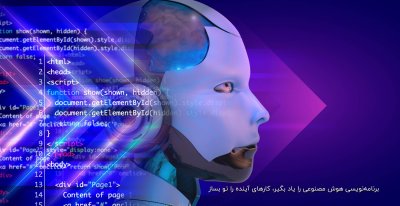Farrokh
Active Member

Digital Domain teams discusses the new challenges.

6 July 2009, by Renee Dunlop
Transforming from Producer to Director and back again, Michael Bay’s second installment of the Transformers saga has unfolded to a roaring success. Juggling between the financial responsibilities of producing and the creative desires of a director, Bay had one more hat to wear. He is also co-owner of digital effects company Digital Domain (DD) where roughly a third of the work was done.
DD worked on five main categories. Alice the Pretender. The kitchen bots. Wheelie. Soundwave, and Reed Man. About 130 shots in all, with “90% really hard stuff!” according to VFX Supervisor Matthew Butler. Bay felt he had already shown the transformations in the first film, so wanted to move on to other things. However, Reedman and Alice the Pretender were two that were designed to transform.










ALICE
Sam, played by Shia LaBeouf, has gone off to college and is meeting new people, making new friends. The Decepticons are trying to get information from Sam. Enter Alice, the hot chick college student, who is really a Decepticon. While Sam is trying to remain loyal to Mikaela, Alice is trying to seduce him to gain information.
Alice, played by Isabel Lucas, was scanned at Gentle Giant Studios, and her dress was a cloth simulation in Maya. The digital model was then rotoscoped to fit the actresses’ movements exactly during the 70-some frames over which the transformation took place. A photography plate was all they had for texture and lighting information.
According to Paul George Palop, CG Supervisor, “the first limitation we found was we had no lighting information. The tiles were only taking the projection of the plate, basically baked in lighting. We were projecting the plate onto the geometry and then turning the geometry into tiles, and they would rotate out of the way.” That was sufficient for the first few frames but as soon as the tiles rotate, the effect broke because the lighting was not dynamic to the environment. Using HDR photography, DD built an entire set of the room and used that to derive lighting information. To add the extra punch, they raytraced the tiles with occlusion and reflections, causing some very expensive but necessary renders. “We lost count of the passes generated for the compositors, but it was probably around 50.” This provided the compositor with a number of passes to dial in.

But covering the body in tiny tiles was only the first step. Now they had to follow controlled animations in what is recognizable as the Transformers style. DD needed to break up the body into facets that were “procedurally eroded,” said Butler “That required tracking a constantly deforming object of this girls clothes, skin, being able to transition to an all CG version, have her break apart the mechanical piece to reveal the under skeleton, predominantly using Houdini and eventually handing off to key frame Maya hand animation. It’s a lot of complicated systematic reveal maps that drive procedural animation at the surface level. Everything is broken apart lighting wise into the most laborious technical lighting passes to concatenate all this together at the end.”
However, because the robot had triple jointed arms and large spikes, the robot inside didn’t really fit inside the digital scan of the actress, so the robot inside was also put into transformation mode. Choreographing that transition and determining the sizes of the tiles was the longest task. “Everything would affect everything,” said Palop, “all the variables would have a visual impact on the final result. We had to go back and forth, it took us months. And months. And months, to find a combination of the variable that we were happy with.” By working backwards from the frame that fully reveals the inner robot and using Nuke to morph, the tiles that appeared at skin level were targeted to join the robot underneath, inheriting the coloration of the robot, from one to the other.





Alice wasn’t the only bot that could make one’s skin crawl. Much the same can be said for Reed Man. Reed Man is introduced through a puma-like robot character called Ravage who spits out insect like nano-bugs that pour into a ventilation system. These nano-bugs are the basis for Reed Man, a human sized praying mantis type character made of razor blades who is so thin he can rotated his alignment perpendicular to the viewer and disappear totally from view.
The sequence is about 12 shots, including the one with the transformation and according to Palop, “that was the hardest shot in the movie. It’s a brand new robot, one that needed to be introduced to the audience so they could understand how this creature worked. Finding the best camera move and focal points to guide the audiences’ eye was one of the greatest challenges, taking months to find just the right moves and racking to get the scene to be fully readable.”
Bay wanted the Reed Man to disappear to camera by simply rotating so the blade side faces the lens, thus becoming an invisible width and disappearing into his surrounding. Reed Mans’ movement wasn’t considered before he got to DD, and they needed to change some of the leg proportions. When the initial concept art arrived, it had short back legs that animated into little mincey steps “like Fred Flintstone bowling,” laughed Taylor. “We had to change the proportions of the legs and change the rigging, and eventually arrived at something with much longer legs that could be bipedal or quadruped.







The building blocks of the robot are called “microcons”, similar to ball bearings that pop open to reveal the insect-like robot inside, and had to match the practical shots of the ball bearings. They were roughly only one third of an inch and there were thousands of them. To enter a military bunker, the ball bearings pour down some pipes, but the behavior could not be random. Using Houdini and a crowd simulation, the animation provided several transformation cycles, a few walk cycles, run cycles, climb cycles, from the ball bearing to the robot form. Those were fed into the crowd system so it could make behavioral decisions.
The second step began when the individual insect robots begin to assemble into one unit, gathering together and climbing on to each other as they create the form. The geometry becomes the target for the particles. Though they are never all seen in camera, Palop estimates there could be 300,000 robots following an animation path to their final location. Each is a mere blade in thickness. The result is the Reed Man, a five foot tall praying mantis built from the ground up, locking into place fully assembled.
Explained Taylor, “the assembly was a combination of particles and instancing and animated run cycles and build cycles, a particle build. We would run a particle system over targeted geometry, and get hundreds of thousands of particles that had to migrate to the target geometry of Reed Man. On those particles, we would instance run cycles or climb cycles. That became a part of our FX department, where the animation and FX departments had to fold together. Most of the background insect bots were procedural and done by instancing cycles onto particle systems. The mid and foreground had some hero animation with keyframing. There was a real back and forth between keyframe and FX animation to pull off the shots.”



Transformers regularly breaks from its onslaught of battles with characters meant to make you laugh, such as with Wheelie or the eight Kitchen Bots. But humor is tough to achieve, as Taylor points out. “Creatively you have to search for those things that will make these shots as interesting, not as spectacular as the larger shots, and that becomes a lot more challenging sometimes. It was stupid juvenile humor, like the espresso bot is always steaming and belching and farting out flames, but you are looking for what can he do to get a little laugh. When you have small characters in the film, compared to an 18 story robot, the challenge is making them visually exciting and interesting and look for moments that are quieter cinematically. If you have a Transformer the size of a skyscraper, it’s already spectacular, so you have to do what you can to plus out the smaller character.”




















Wheelie is a remote control truck/toy that has dialogue scenes and interacts with human characters as a brash, rude little guy. He also has a big crush on Mikaela and is torn between whether he is a Decepticon or an Autobot, so “He’s got a lot of issues that make him fun to animate. He’s a big part of the comic relief element.”
There were several iterations to discover who the character was. Bay first explored a schizophrenic, high strung character, and some animation tests using temporary voice tracks were created. It wasn’t what Bay was looking for. He then considered making Wheelie more adorable, describing him as a character that would approach Michaela and say “I wuv you!” But after testing that character for a while, Bay hit on the resolution he was looking for, and the Wheelie character, a Joe Pesci wise guy type character was born. “He’s a bit on the raunchy side, a bit abrasive.” While consideration of casting an actor to help define the part, Bay preferred discovering the final nuances through animation tests. a labor intensive process but what the director wanted. There were same voice changes, more in the lines of what he was saying than casting a new voice talent, so some reanimation was needed, but “ultimately, through the whole process, Wheelie has been testing really well. Michael told us it was Spielberg’s favorite character in the movie. He’s funny, genuinely funny in the film.”
Juggling so many requirements was a test for the director as well as the crew at DD, but according to Buler, “it was simply a process that had to be done. Even though a character was in the early stages and far from fully realized, and there was the potential for Bay to love or hate the character before its full potential, it was best to show the character early on so the artists were at least aware if their time, and the budget, was being spent wisely.
“He’s managing himself. I think in some cases that can be a real scary situation, when you are thinking, ‘is he going to wear the Director hat more and go financial out of control, or is he going to curtail his creative freedom because he’s worried about spending too much money? I think he did a pretty damn good job of balancing that.”
منبع : features.cgsociety.org










